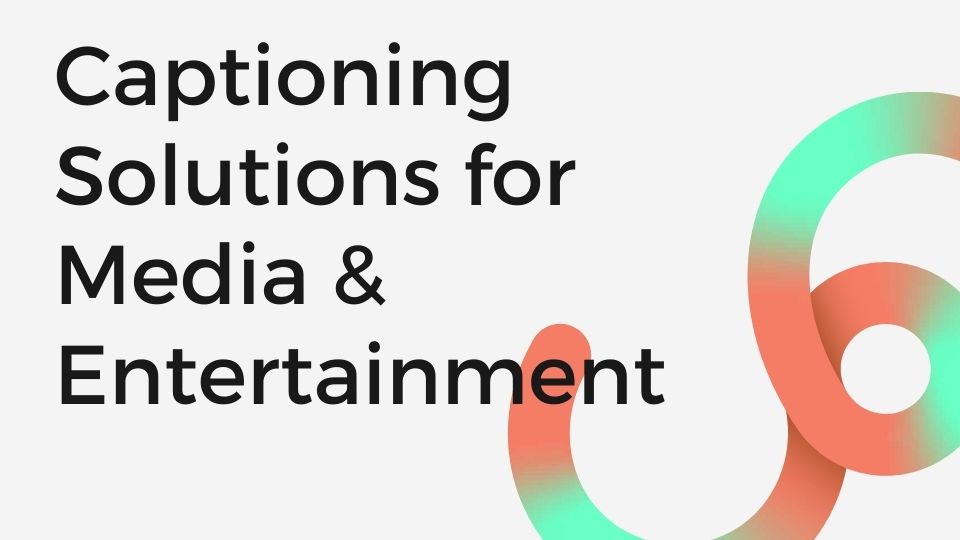Did you know that 85% of video on the web is without sound? That’s a lot of videos that people are watching without the ability to hear what’s going on. This can be a big issue for businesses in the media and entertainment industry.
Luckily, there are captioning solutions that can help! In this article, we will discuss the different types of captioning solutions and how they can benefit your business. We will also provide some tips on how to choose the right captioning solution for your needs.
What Is Captioning?
Captioning is the process of displaying text on a screen in synchronization with spoken dialogue. It is most commonly used to provide interpretive information for people who are deaf or hard of hearing, but can also be used for other purposes such as subtitles for foreign-language speakers or closed captioning for television broadcasts.
The text is typically displayed in a larger font and/or different color than the surrounding dialogue, making it easier to read. In some cases, the text may also include speaker identification and sound effects.
Captioning can be displayed on a variety of devices, including televisions, computers, and mobile phones. It can also be delivered via closed captioning services, which provide real-time captions for live events such as speeches and webinars.
Are Captioning and Transcription the Same?
Captioning and transcription are not the same. Transcription is the process of converting speech into written text while captioning is the process of displaying text on a screen in synchronization with spoken dialogue.
Both captioning and transcription can be used to provide interpretive information for people who are deaf or hard of hearing, but they serve different purposes. In both, AI services can be used, as AI transcription is increasing in popularity.
What Are Captioning Services?
Captioning services provide live or recorded captions for televisions, movies, conferences, and other events. The captions are generally produced by a team of trained professionals who use specialized equipment to transcribe the audio into text.
In some cases, the text is then displayed on a screen for the audience to read. In other cases, it is conveyed via an earpiece or other personal device. Captioning services can be used to improve communication for people with hearing loss, as well as to provide extra information for people who are watching television or movie without sound.
Additionally, captioning services can be used in educational settings to help students follow along with lectures and class discussions.
Different Types of Captioning Solutions
There are several different types of captioning solutions available to fit the specific needs of any business. Real-time Captioning (sometimes called Communication Access Real-Time Translation, or CART) is commonly used in educational and legal settings where there is a need for an accurate record of what was said.
This type of captioning uses human stenographers to transcribe speech as it happens, which can then be displayed on a screen or monitor for viewers to read. Another option is Voice Recognition software, which uses artificial intelligence to convert speech to text.
This type of captioning can be less accurate than real-time captioning, but it is often more affordable and easier to use. Automated Captioning services use similar technology to Voice Recognition software, but the captions are generated by humans instead of computers.
This means that the captions are usually more accurate, but they can be more expensive. Finally, Closed Captioning solutions include pre-recorded captions that are synchronized with the audio track of a video.
This type of captioning is often used for movies and television programs. Closed Captioning can be either open (visible to all viewers) or closed (only accessible to those who need it, such as people who are deaf or hard
How captioning can help the media and entertainment industry?
According to a 2017 report from the National Entertainment Access Network (NEAN), captioning can provide numerous benefits for the media and entertainment industry. For example, captioning can improve the viewing experience for individuals who are deaf or hard of hearing, as well as those who speak English as a second language.
In addition, captioning can help to ensure that media content is accessible to a wider audience, which can lead to increased viewership and profits. Furthermore, captioning can help to create a more inclusive environment for all viewers by reducing barriers to entry.
As the media and entertainment landscape continues to evolve, captioning will likely play an increasingly important role in ensuring that all viewers have access to high-quality content.
How Do I Choose a Captioning Service?
When choosing a captioning service, it is important to consider the specific needs of your business. For example, if you are looking for a solution to caption live events, you will need to choose a service that offers real-time captioning.
On the other hand, if you are looking for a solution to caption pre-recorded video content, you may want to choose a service that offers closed captioning. Additionally, it is important to consider the accuracy of the captions, as well as the cost of the service.

